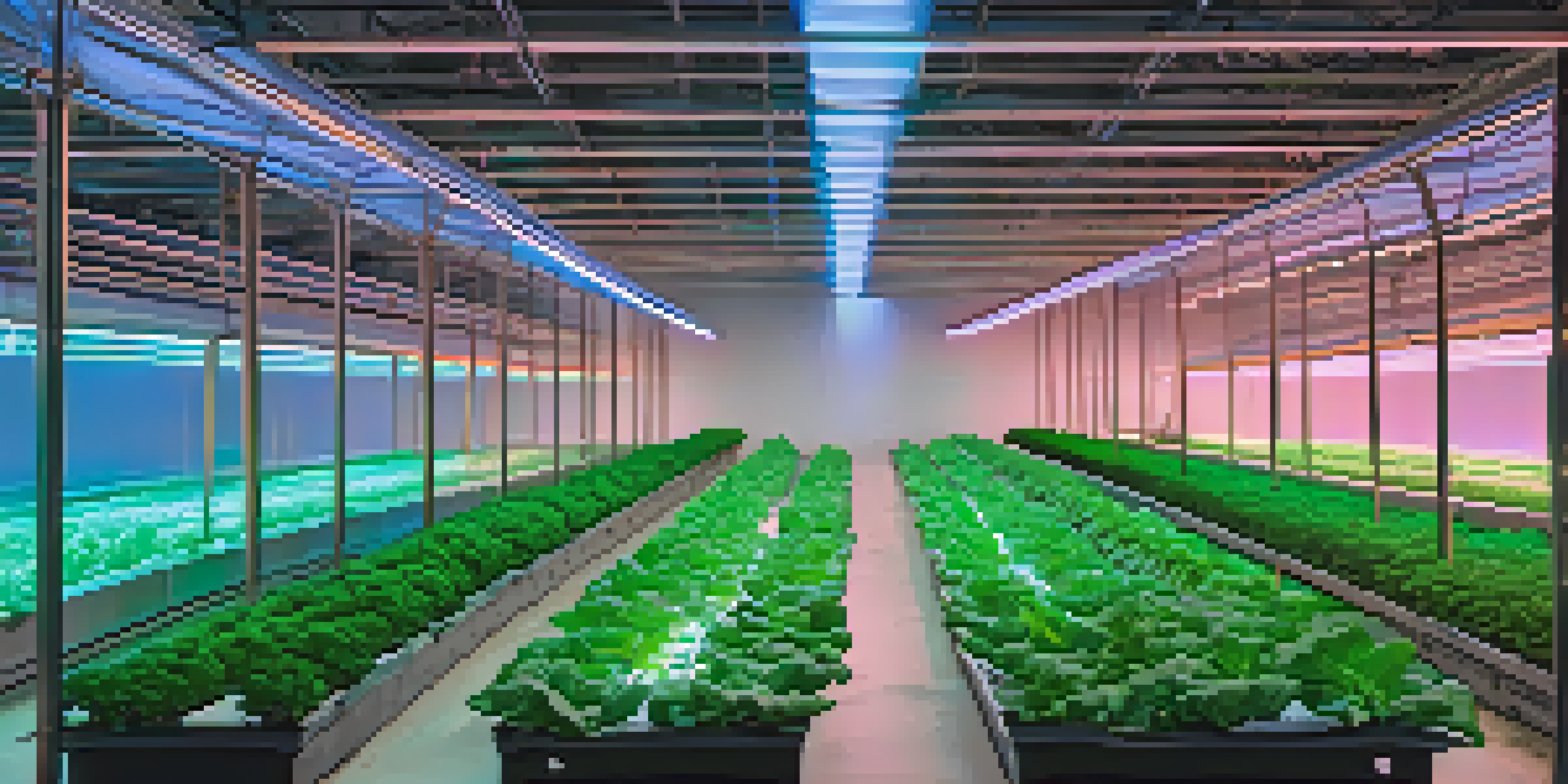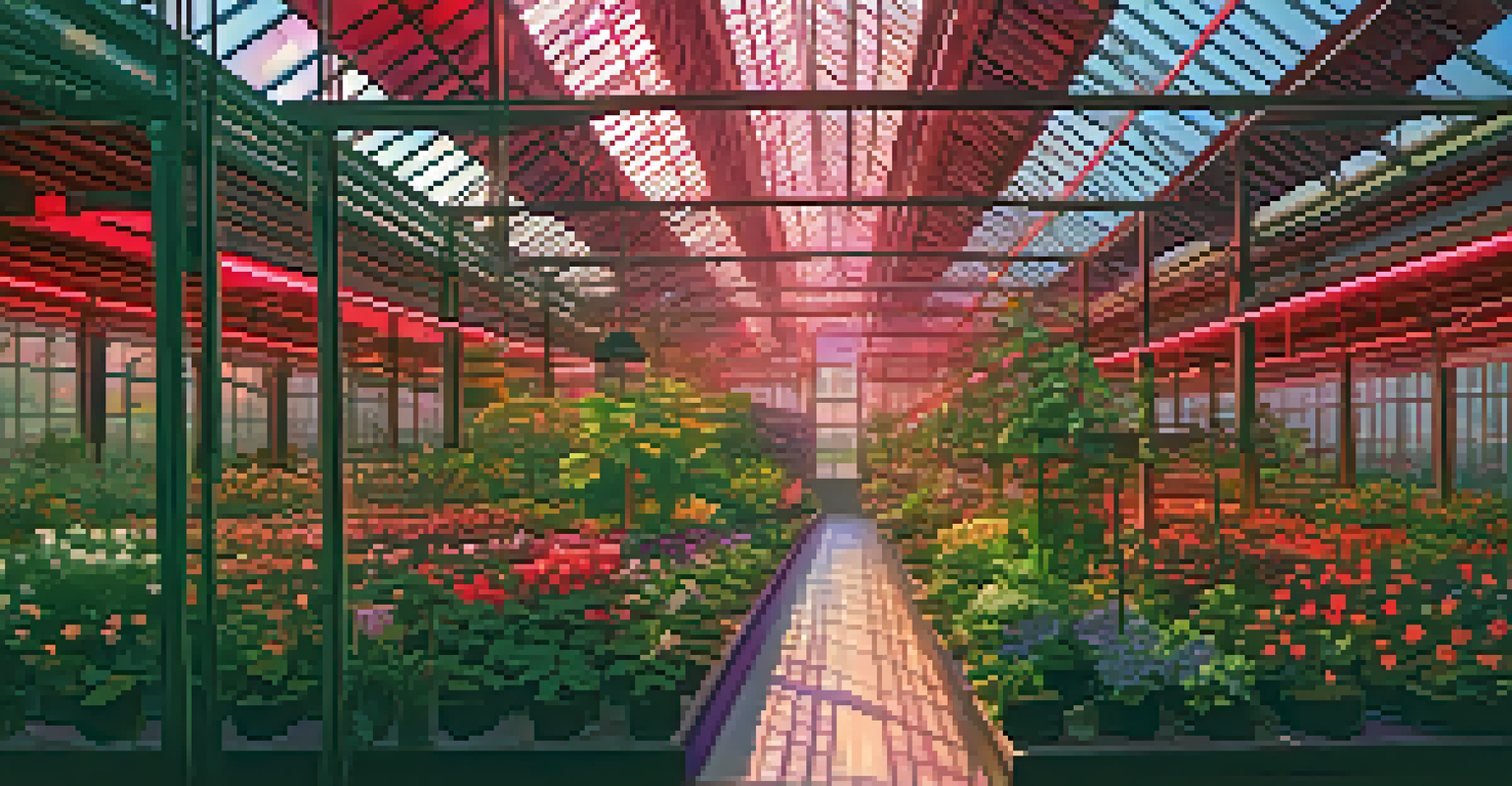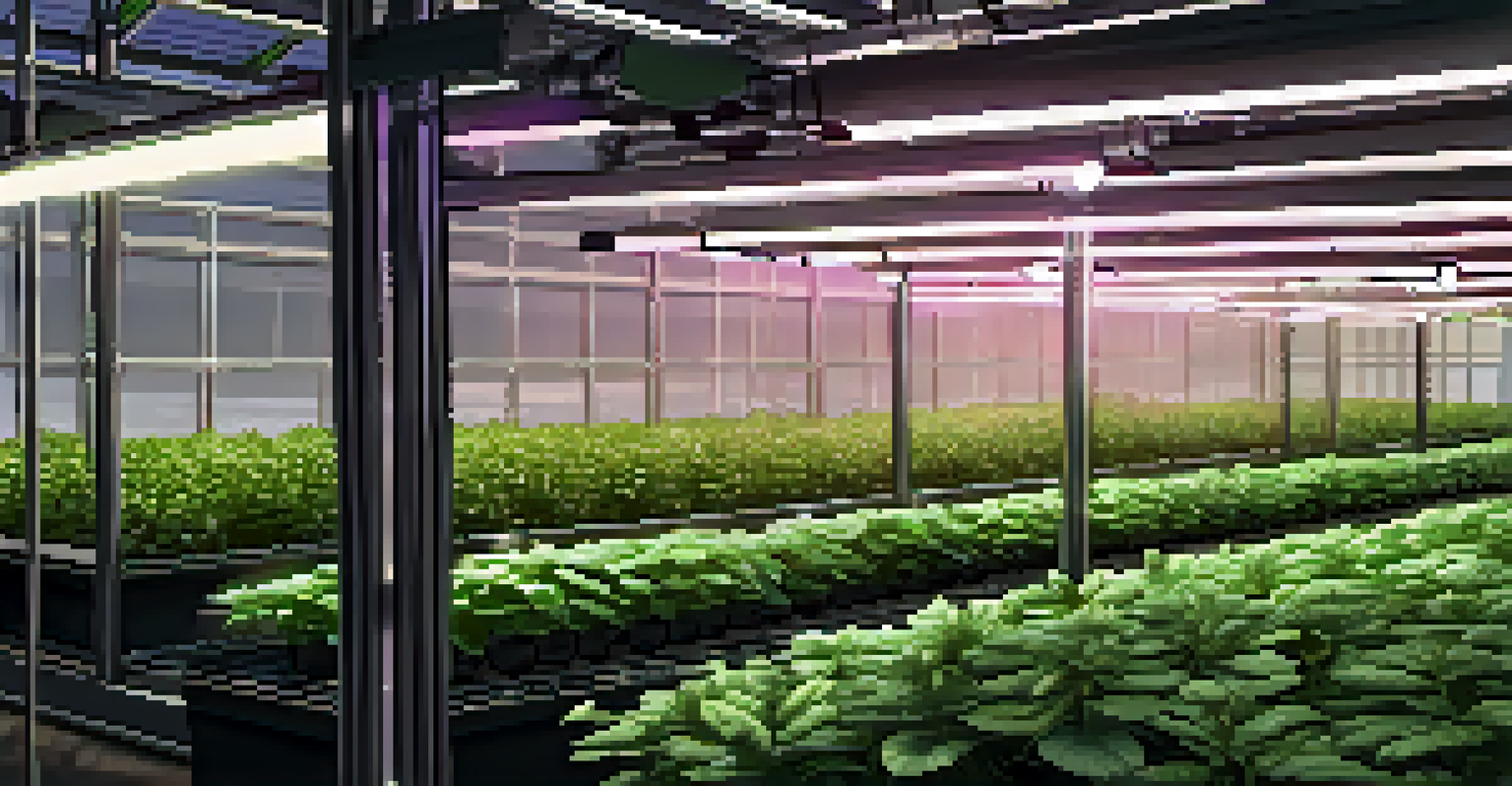Using LED Grow Lights to Boost Plant Growth in Greenhouses

Understanding LED Grow Lights and Their Benefits
LED grow lights are energy-efficient lighting options designed to support plant growth. Unlike traditional bulbs, they emit light in specific wavelengths that plants use for photosynthesis. This targeted approach allows for healthier, faster-growing plants, making them ideal for greenhouse environments.
The future of agriculture is in sustainable practices, and LED grow lights play a crucial role in this transformation.
One of the most significant advantages of LED lights is their low heat emission. This means they can be placed closer to plants without the risk of overheating, which can be a concern with other types of lighting. As a result, growers can maximize their space and light efficiency.
Additionally, LED lights consume less energy, which translates to lower electricity costs. This makes them a sustainable choice for greenhouse operations, allowing growers to invest their savings back into their crops or other improvements.
Optimizing Light Spectrum for Different Plants
Different plants require different light spectra for optimal growth. For instance, leafy greens thrive under blue light, while flowering plants benefit from red light. Understanding these requirements helps growers choose the right LED grow lights for their specific crops.

Many LED systems now come with adjustable spectra, allowing growers to customize their lighting setup. This flexibility means they can switch between light conditions as plants progress through their growth stages, ensuring they receive the right type of light at the right time.
Energy Efficiency of LED Grow Lights
LED grow lights consume less energy and have a longer lifespan, leading to significant cost savings for greenhouse operations.
By tailoring the light spectrum, growers can enhance not only growth rates but also the quality of their produce. This can lead to more vibrant colors, richer flavors, and increased nutritional content, making the plants more appealing to consumers.
Setting Up LED Grow Lights in Your Greenhouse
When setting up LED grow lights, placement is key. Ideally, lights should be positioned at an appropriate height above the plants to ensure even coverage without causing stress. A good rule of thumb is to start with lights 12-24 inches above the canopy, adjusting as needed.
Energy-efficient lighting is not just a choice; it's a necessity for modern agriculture.
It's also essential to consider the layout of your greenhouse. Ensuring that light penetrates all corners and doesn't create shaded areas can maximize plant exposure. Using reflective materials on walls can help distribute light evenly throughout the space.
Finally, investing in timers or smart lighting systems can further enhance your setup. These tools allow for precise control over light cycles, mimicking natural sunlight patterns and promoting healthy growth rhythms in your plants.
Energy Efficiency and Cost Savings with LEDs
One of the primary reasons growers are shifting to LED technology is energy efficiency. LED lights use significantly less electricity than traditional grow lights, which can lead to substantial cost savings over time. This is especially beneficial for large-scale operations.
Beyond just lower energy bills, LEDs also have a longer lifespan compared to conventional bulbs. While traditional lights may need frequent replacement, LEDs can last for years, reducing maintenance costs and downtime.
Customizable Light Spectra for Plants
Adjustable light spectra in LED systems allow growers to optimize lighting for different plant types, enhancing growth and produce quality.
These savings can be reinvested into the greenhouse, allowing for upgrades or expansion. In this way, using LED grow lights not only boosts plant growth but also contributes to the overall financial health of the operation.
The Role of LED Grow Lights in Sustainable Agriculture
Sustainability is a critical consideration in modern agriculture, and LED grow lights play a vital role in this movement. Their energy efficiency reduces the carbon footprint of greenhouse operations, aligning with eco-friendly practices.
Furthermore, by promoting faster plant growth, LED lights can help meet the growing global food demand without the need for expanding agricultural land. This efficiency contributes to more sustainable land use and less environmental impact.
As consumers increasingly seek sustainably grown produce, adopting LED technology can enhance a greenhouse's marketability. Growers can proudly promote their eco-conscious methods while producing high-quality crops.
Common Misconceptions About LED Grow Lights
Despite their benefits, there are still some misconceptions surrounding LED grow lights. One common myth is that they are too expensive to implement. While the initial investment might be higher, the long-term savings on energy and replacements often outweigh the costs.
Another misconception is that LED lights aren't as effective as traditional lights. In reality, when properly selected and used, LEDs can outperform other lighting options, providing ample light for photosynthesis and promoting healthy plant growth.
Sustainable Agriculture Practices
Using LED grow lights reduces the carbon footprint of agriculture and supports sustainable land use by promoting faster plant growth.
Lastly, some people worry about the complexity of setting up LED systems. However, many modern fixtures are user-friendly and come with clear instructions, making them accessible even for beginners.
Future Trends in LED Grow Light Technology
The field of LED grow light technology is constantly evolving, with exciting advancements on the horizon. Innovations like smart lighting systems that adjust automatically based on plant needs are becoming more common, enhancing efficiency and convenience.
Researchers are also exploring new wavelengths and combinations that can further optimize plant growth. These developments promise to make LED systems even more effective in various growing conditions, from greenhouses to vertical farms.

As the agriculture industry continues to embrace technology, LED grow lights will play an increasingly important role. Their combination of efficiency, sustainability, and adaptability positions them at the forefront of modern greenhouse practices.